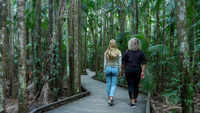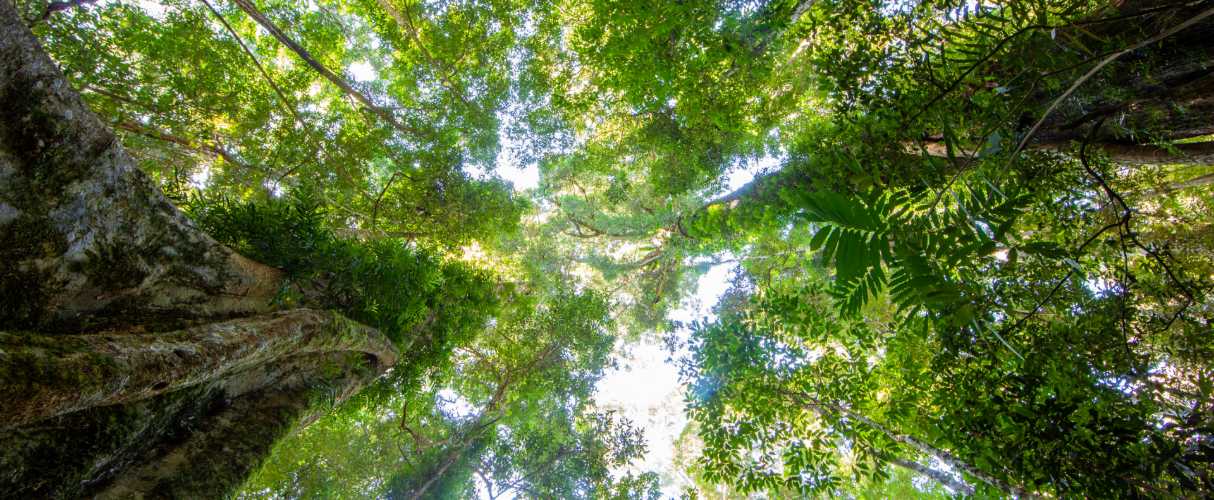Mary Cairncross Scenic Reserve protects an important patch of subtropical rainforest. Many of the trees you see today are hundreds of years old.
Keep you eye out for the diverse array of animals and plants that call this rainforest home:
- 391 plant species – seven of these are listed as rare, vulnerable or near-threatened
- 141 bird species
- 68 species of mammals, reptiles and amphibians – eight of which are near-threatened or threatened
- As yet unspecified number of invertebrate species
- As yet unspecified number of fungi
Many of the animals and plants that live in subtropical rainforests are only found between southeast Queensland and northern New South Wales. They are endemic – meaning they do not live anywhere else. This bioregion is a climatic overlap, featuring species from the tropics in their southern-most range and species from temperate areas in their northern-most range. This overlap is incredibly biodiverse.
88% of subtropical lowland rainforest has been cleared since European settlement, making this reserve ecologically important within the fragmented landscape. Although the reserve is healthy, its small size and lack-of-connectivity, mean some species that once lived here are now locally extinct, including the long-nosed potoroo and rufous bettong.
Fortunately, Mary Cairncross Scenic Reserve is protected and threats are monitored and managed.
Visitors and locals alike care deeply for this rainforest. We are sure you will too.
Enjoy a forest walk


Take a closer look at the wonders of the rainforest.
